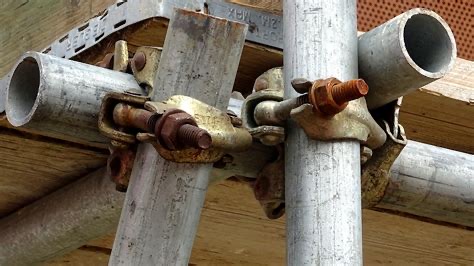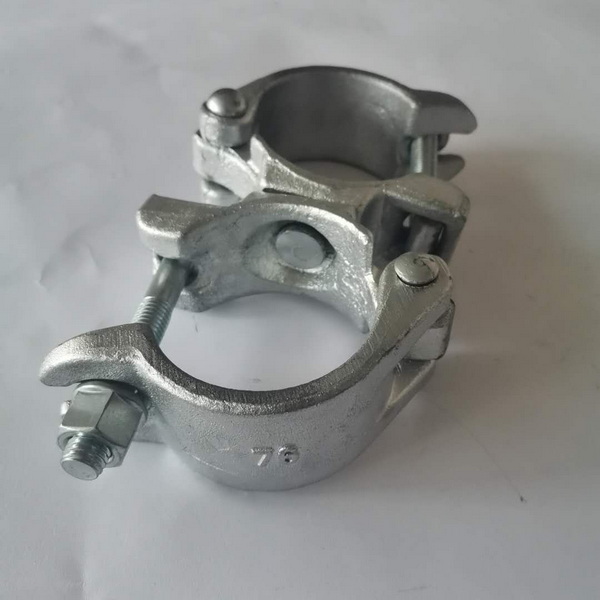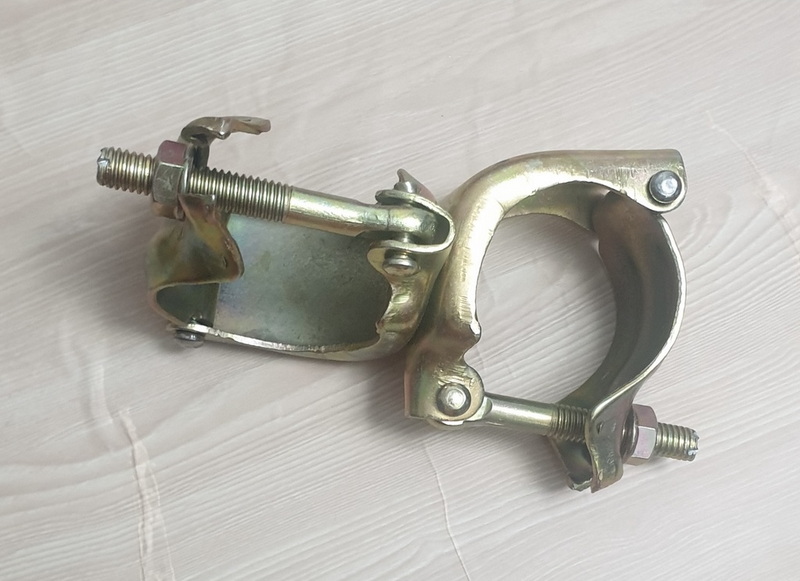Content Menu
● Introduction to Swivel Clamp Scaffolding
● Components of Swivel Clamp Scaffolding
● Safety Considerations
>> Hazards Associated with Scaffolding
>> Safety Measures
● Applications of Swivel Clamp Scaffolding
● Case Studies and Innovations
● Advanced Safety Technologies
>> Scaffold Design Software
>> Real-Time Monitoring Systems
>> Training Programs
● Environmental Considerations
● Regulatory Compliance
● Conclusion
● FAQ
>> 1. What are the main hazards associated with swivel clamp scaffolding?
>> 2. How do swivel couplers enhance scaffold safety?
>> 3. What safety measures should be taken during scaffold assembly?
>> 4. Can swivel clamp scaffolding be used for high-rise construction?
>> 5. How often should scaffolds be inspected?
● Citations:
Swivel clamp scaffolding is a widely used system in construction due to its versatility and efficiency. However, safety concerns often arise when it comes to heavy-duty applications. This article will delve into the safety aspects of swivel clamp scaffolding, exploring its components, applications, and safety measures.

Introduction to Swivel Clamp Scaffolding
Swivel clamp scaffolding is a type of tube clamp scaffolding that utilizes swivel couplers to connect scaffold tubes at various angles. These couplers are crucial for creating complex scaffold structures that can adapt to different building geometries and site conditions.
Components of Swivel Clamp Scaffolding
1. Swivel Couplers: These are the core components that allow for flexible connections between scaffold tubes. They are designed to hold significant loads while providing the necessary flexibility for scaffold assembly.
2. Scaffold Tubes: These are the main structural elements of the scaffold. They are typically made of steel and come in various diameters, with 48.3 mm being the most common.
3. Clamps and Couplers: Besides swivel couplers, other types of clamps like double couplers and sleeve couplers are used to secure the scaffold structure.
Safety Considerations
Safety is paramount when using swivel clamp scaffolding for heavy-duty construction. Here are some key considerations:
Hazards Associated with Scaffolding
- Erecting and Dismantling: These phases are particularly risky due to the potential for structural instability if components are not properly secured.
- Climbing and Access: Ensuring safe access and egress is crucial to prevent falls, which are a leading cause of scaffold-related injuries.
- Overloading: Exceeding the maximum load capacity can lead to structural failure.
Safety Measures
1. Proper Assembly: Ensure all components are securely fastened during assembly. Swivel couplers should be tightened to the recommended torque to prevent loosening over time.
2. Regular Inspections: Regularly inspect scaffolds for damage or wear, especially after assembly and before use.
3. Load Calculations: Always calculate the maximum allowable load to prevent overloading.
4. Guardrails and Fall Protection: Install guardrails and ensure workers use personal fall protection equipment (PFPE) when working at heights.
5. Training and Supervision: Ensure that workers are trained in scaffold assembly, use, and safety procedures.

Applications of Swivel Clamp Scaffolding
Swivel clamp scaffolding is versatile and can be used in various construction scenarios:
- Complex Structures: It is ideal for projects requiring irregular shapes or angles, such as historic building renovations or unique architectural designs.
- High-Rise Construction: Swivel clamp scaffolding can be used for high-rise buildings by ensuring proper anchoring and stability measures are in place.
- Industrial Settings: It is commonly used in industrial settings for maintenance and repair work due to its adaptability and ease of assembly.
Case Studies and Innovations
Recent innovations in scaffolding technology have focused on improving safety and efficiency:
- Anti-Tipping Scaffolds: Designs that incorporate anti-tipping features, such as outriggers and stabilizers, enhance stability and reduce the risk of overturning.
- Modular Systems: Modular scaffolding systems allow for quicker assembly and disassembly, reducing exposure to hazards during these phases.
Advanced Safety Technologies
Scaffold Design Software
Modern software allows for the design and simulation of scaffold structures before physical assembly. This can help identify potential safety issues and optimize scaffold configurations for maximum stability.
Real-Time Monitoring Systems
Some scaffolding systems now incorporate real-time monitoring technology to track load capacities and structural integrity. This provides immediate alerts if safety thresholds are exceeded.
Training Programs
Advanced training programs, including virtual reality simulations, are becoming more prevalent. These programs enhance worker safety by providing immersive training experiences that simulate real-world scenarios.
Environmental Considerations
In addition to safety, environmental factors should also be considered when using swivel clamp scaffolding:
- Material Sustainability: Choosing scaffolding components made from sustainable materials can reduce the environmental impact of construction projects.
- Noise Reduction: Using scaffolding systems that minimize noise pollution can be beneficial in urban areas.
Regulatory Compliance
Ensuring compliance with local and international safety standards is crucial. Regulations such as OSHA in the United States and EN 12811 in Europe provide guidelines for safe scaffold use.
Conclusion
Swivel clamp scaffolding can be safe for heavy-duty construction if properly assembled, maintained, and used. It is crucial to adhere to safety guidelines, conduct regular inspections, and ensure that all workers are trained in scaffold safety. By understanding the components and applications of swivel clamp scaffolding, construction teams can leverage its versatility while minimizing risks.

FAQ
1. What are the main hazards associated with swivel clamp scaffolding?
Swivel clamp scaffolding hazards include improper assembly, overloading, and inadequate safety measures during erection and dismantling. Ensuring proper training and adherence to safety protocols is essential to mitigate these risks.
2. How do swivel couplers enhance scaffold safety?
Swivel couplers provide flexibility in scaffold design, allowing for secure connections at various angles. This flexibility is crucial for adapting to complex building geometries while maintaining structural integrity.
3. What safety measures should be taken during scaffold assembly?
During assembly, ensure all components are securely fastened, and swivel couplers are tightened to the recommended torque. Regular inspections should be conducted to identify any potential issues before use.
4. Can swivel clamp scaffolding be used for high-rise construction?
Yes, swivel clamp scaffolding can be used for high-rise construction. However, it is essential to ensure proper anchoring and stability measures are in place to prevent structural instability.
5. How often should scaffolds be inspected?
Scaffolds should be inspected regularly, especially after assembly and before use. This includes checking for damage, wear, and ensuring all safety features are in place.
Citations:
[1] https://www.ihsa.ca/rtf/health_safety_manual/pdfs/equipment/Scaffolds.pdf
[2] https://www.youtube.com/watch?v=bmV1SlcXqG8
[3] https://www.labour.gov.hk/eng/public/os/B/mss.pdf
[4] https://www.wm-scaffold.com/scaffolding-coupler.html
[5] https://www.shutterstock.com/search/swivel-coupler
[6] https://patents.google.com/patent/WO2018148977A1/zh
[7] https://han3788.en.made-in-china.com/product/kFRtPbqugcTp/China-Heavy-Duty-Swivel-Clamp-1-1-2-Construction-Scaffolding-Parts-Galvanized-Iron-.html
[8] https://www.shutterstock.com/search/swivel-pipe-clamp
[9] https://pmc.ncbi.nlm.nih.gov/articles/PMC8750143/
[10] https://www.safeworkaustralia.gov.au/system/files/documents/1703/scaffolds-scaffolding-work-general-guide.docx
[11] https://patents.google.com/patent/CN202280245U/en






















